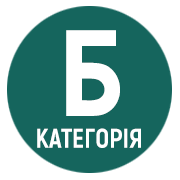THE IMAGE OF VASYL YEROSHENKO REPRESENTED BY IVAN KORSAK
Abstract
The article deals with the literary image of Vasyl Yeroshenko, created in the essay «Vasyl Yakovych. A Japanese classic» that is a part of the collection of the fiction and documentary stories «Your Names, Ukraine» (Lutsk, 2007), written by a famous Volynian writer and journalist Ivan Korsak. The author managed to describe a figure of the prominent writer and humanist of the first part of the 20th century V. Yeroshenko. Yeroshenko was a visual impairment specialist, polyglot, Esperanto speaker and had Ukrainian roots on his father’s side. He wrote prose, poetry, and journalistic works in Japanese, Russian, Ukrainian, and Esperanto. At the same time he had a good command of English, Chinese, Turcoman and other languages. In spite of being blind, Vasyl Yakovych visited England, Germany, Belgium, India, Thailand, Burma, China, Japan, Turkmenistan, Finland, and Chukchi Peninsula. At the end of his life he returned home where he died and was buried in the sloboda of Obykhivka (now it is a part of Russia). By applying a stylistic device – recollections of a person who was to have died in the snows of tundra, a Volynian author managed to present concisely the main facts from the life of the master and create his artistic literary image. Documents (reviews, extracts from the prefaces to the translations, newspapers comments, and reminiscences) enhanced the vividness of the fictionally presented material, providing its factuality and persuasion. In order to strengthen the image of the master, the author of this article used the examples and illustrations from some «Chukotka’s Tales» («Чукотські оповідання») – «Chukotka’s idylls» («Чукотська ідилія»), «Chukotka’s legend» («Чукотська легенда»), and «Chess threemover» («Шахова триходівка»), translated from the Esperanto language. They prove the humanistic views of V. Yeroshenko, his love and respect to the peoples of the North, who lived in the harmony with the Mather-Tundra. His works condemn the foreign intrusion of the Russians with their false communistic ideology that caused the destruction of the well-established old traditions in the nature and community life.
References
2. Єрошенко В. Шахова триходівка / упор. В. Паюк. Луцьк : Терен, 2019. 68 c. Eroŝenko V. La trimova ŝakproblemo / komp. kaj red. V. Pajuk. Lucjk : Teren, 2019. 68 p.
3. Корсак І. Василь Якович. Класик японський. Імена твої, Україно: художньо-документальні оповідання. Луцьк : Твердиня, 2007. С. 143–147.
4. Корсак І. Японський класик Василь Єрошенко. Імена твої, Україно: художньо-документальні оповідання. Луцьк : Твердиня, 2007. С. 290–294.
5. Леся Українка у світі перекладу (вибрані переклади європейськими та східними мовами) : навчальний посібник / укл.: А.М. Архангельська, О.М. Бєлих, А.В. Біднюк та ін. ; упоряд. і відп. ред. Н.О. Данилюк ; 2-е вид., випр. і доп. Київ : Кондор, 2021. 355 с.
6. Патлань Ю. Письменник Василь Єрошенко – засновник Японської асоціації есперантистів. Prostir museum. 2014. 19 листопада. URL : http://prostir.museum/ua/post/33785.
7. Патлань Ю. Роль перекладів Лу Сіня у вивченні та виданні творів Василя Єрошенка в СРСР та на пострадянському просторі (до 125-річчя до дня народження В.Я. Єрошенка). Китаєзнавчі дослідження. 2015. № 4. С. 144–159.



